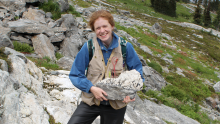UBC researchers have identified conservation “hot spots” around the world where the temptation to profit from overfishing outweighs the appetite for conservation.
Combining economic outlook and fisheries population growth rates for all countries currently reported to fish in the ocean, UBC fisheries researchers William Cheung and Rashid Sumaila developed a conservation risk index to reveal the economic-conservation trade-offs of fishing.
Areas with the highest risk index – those most biologically and economically vulnerable to overfishing – include the northeastern coast of Canada, the Pacific coast of Mexico, the Peruvian coast, the south Pacific (offshore of New Zealand in particular), the southern and southeastern coast of Africa, and the Antarctic region.
“This index is a guide for determining the appropriate conservation and fisheries management policy for each region,” says Cheung, an assistant professor in UBC’s Fisheries Centre, who presented his research during a press briefing at the Annual Meeting of the American Association for the Advancement of Science (AAAS) in Vancouver, Canada.
“The most vulnerable areas may need to be protected with special management approaches – such as marine protected areas, while others may benefit from economic incentive instruments to better manage the ecosystems – such as territorial use rights in fisheries, or TURFs,” says Sumaila, professor and director of the UBC Fisheries Centre.
The index can also help conservation managers use scarce resources in a targeted, efficient and effective way to ensure the conservation of sustainable use of seafood and marine ecosystems, Sumaila adds.
“Fishing has a major impact on marine biodiversity, causing the depletion of many species,” says Cheung, who grew up in Hong Kong and focused his earlier research on fisheries in the South China Sea – one of the most over-exploited areas in the world’s oceans. “I witnessed how overfishing can damage marine ecosystems and the goods and services they provide – but in order to solve the problem, we need an understanding of both biology and economics. Biology determines whether a stock is more vulnerable to fishing, while economics determines how strong the incentive is to overfish the stock now.“
The conservation risk index is based on the discount rates of fishers and the intrinsic population growth rates of the fish being targeted. The discount rate is a measure of how much a dollar of fish to be received in the future is worth today – similar to the long-term lending interest rate of central banks. The intrinsic population growth rate is the difference between the birth and death rate of a fish stock.
Cheung and Sumaila used published discount rates data for all countries that are reported to fish in the ocean, and intrinsic growth rate data for major exploited fish species to calculate the conservation risk index for each half degree square area of the world’s oceans (2,500 square-kilometres, roughly the size of Metro Vancouver or three times the size of New York City). The higher the conservation risk index, the more vulnerable the area is.
Musqueam First Nation land acknowledegement
We honour xwməθkwəy̓ əm (Musqueam) on whose ancestral, unceded territory UBC Vancouver is situated. UBC Science is committed to building meaningful relationships with Indigenous peoples so we can advance Reconciliation and ensure traditional ways of knowing enrich our teaching and research.
Learn more: Musqueam First Nation
Faculty of Science
Office of the Dean, Earth Sciences Building2178–2207 Main Mall
Vancouver, BC Canada
V6T 1Z4


